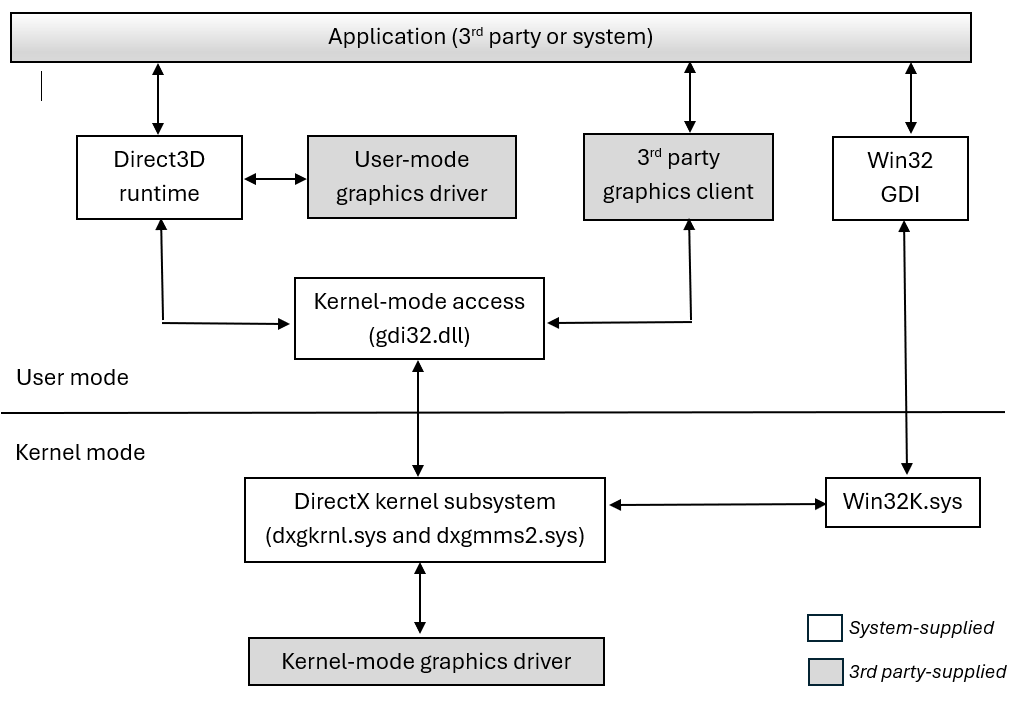WDDM Architecture
The Windows Display Driver Model (WDDM) has user-mode and kernel-mode components. The following figure shows the various components of the WDDM architecture.

System-supplied modules are shown in the figure as white boxes. Gray boxes represent modules that partner can provide. Applications can be system-supplied or developed by partners.
System-supplied modules
The following system-supplied modules are part of the WDDM architecture:
The Direct3D runtime is a user-mode component that provides an application API for applications. It provides various services and is responsible for managing the interaction between an application, the user-mode graphics driver (UMD), and gdi32.dll.
gdi32.dll is a user-mode library that a D3D runtime or a partner graphics client links against. A runtime or client calls a gdi32 "thunk" that routes the call to the appropriate kernel-mode function in the DirectX kernel subsystem (Dxgkrnl).
Dxgkrnl is the core component of the Windows operating system's kernel-mode graphics subsystem. It facilitates communication between the operating system, the UMD, and the kernel-mode display miniport driver (KMD). Dxgkrnl includes subcomponents such as the display port driver, the memory manager (VidMm), and the scheduler (VidSch). Dxgkrnl consists of the following system files:
- dxgmms2.sys, which implements the GPU/NPU scheduler and video memory manager for WDDM versions 2.0 and above.
- dxgmms1.sys, which implements the GPU/NPU scheduler and video memory manager for WDDM versions before WDDM 2.0.
- dxgkrnl.sys, which handles everything else in the DirectX kernel subsystem, including loading the needed dxgmms.sys file, initial processing of D3DKMTXxx calls from user mode, display modes, GPU virtualization, power management, interface with the kernel executive, and so forth.
Win32 GDI and Win32k.sys are legacy components that are still used by some applications.
Third party-supplied modules
The UMD is a dynamic-link library (DLL) that the Direct3D runtime loads.
The KMD communicates with Dxgkrnl and the graphics hardware.
A graphics hardware vendor must supply both a UMD and KMD.
- A third-party partner graphics client is a user-mode component that has its own API and framework. It calls gdi32 thunks to communicate with the kernel-mode graphics subsystem. The clients that Microsoft is aware of are listed in D3DKMT_CLIENTHINT.